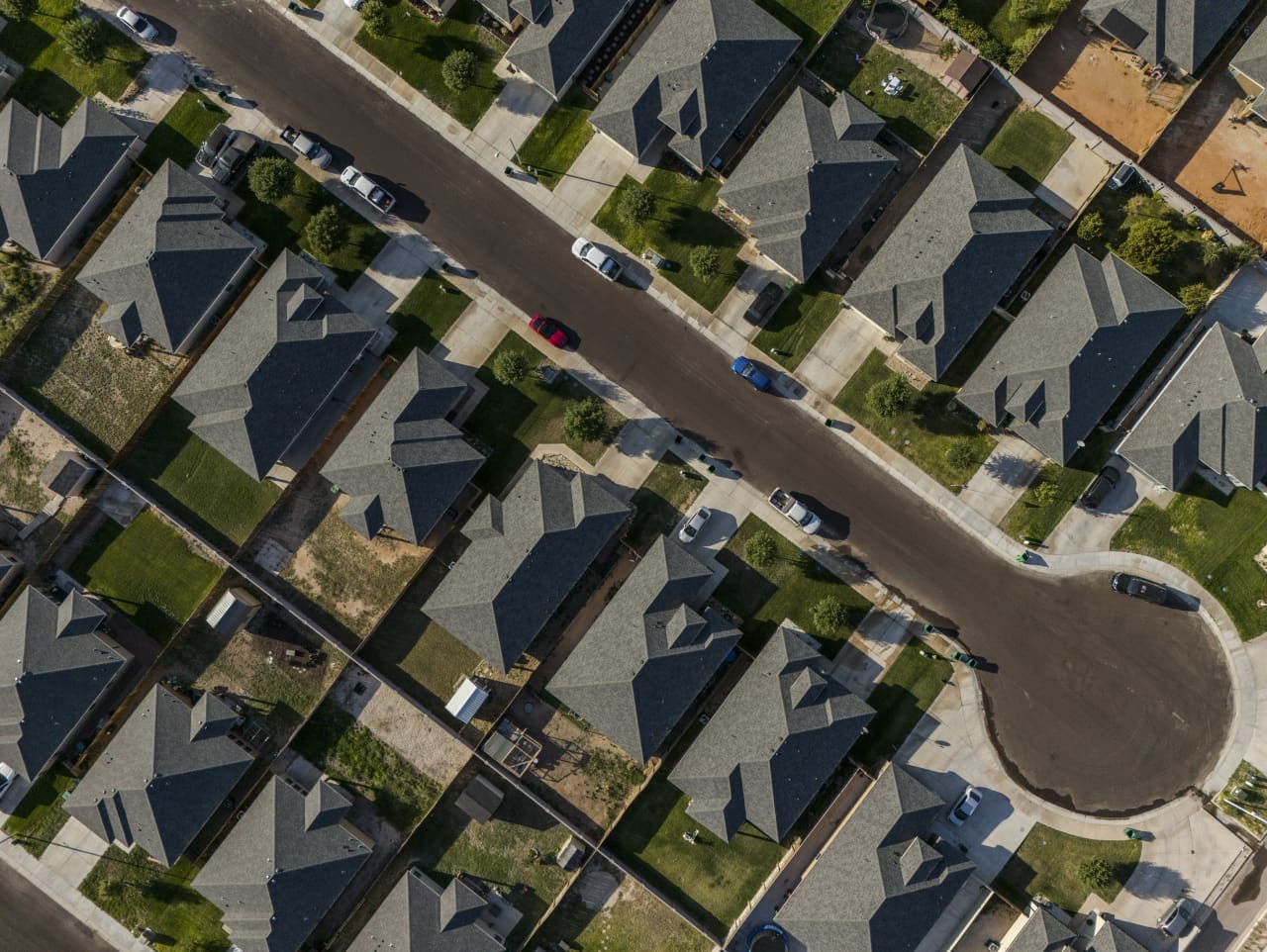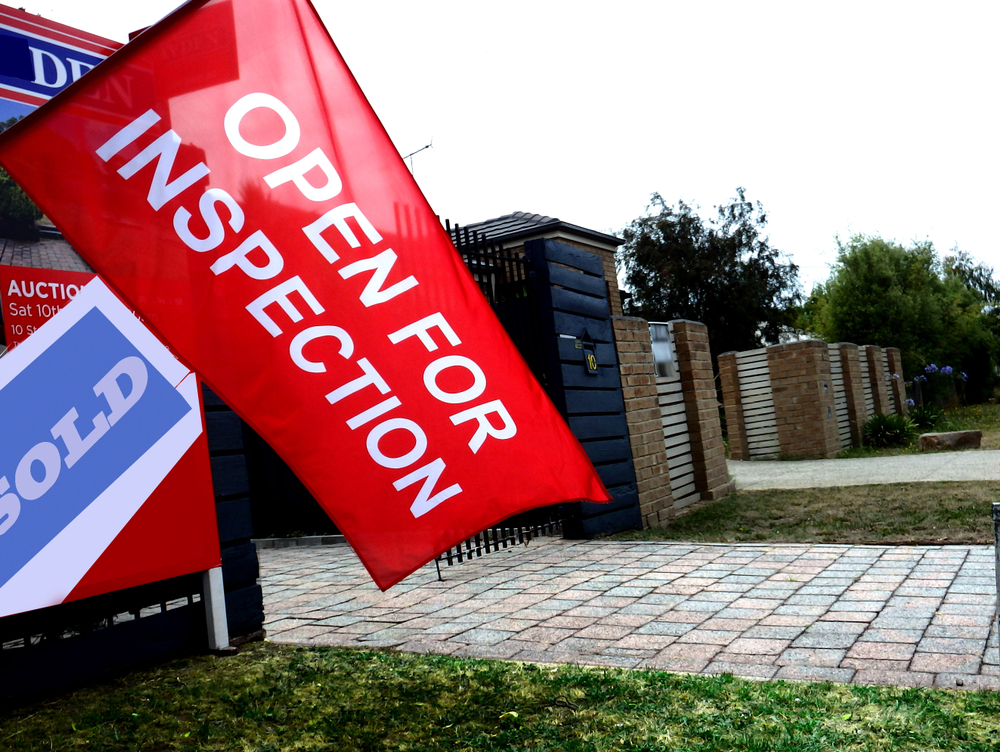Home Sales on Track for Worst Year Since 1995
September sales fell 3.5% from a year earlier. In 2023, home sales hit their lowest point in 30 years.
Sales of existing homes in the U.S. are on track for the worst year since 1995— for the second year in a row.
Persistently high home prices and elevated mortgage rates are keeping potential home buyers on the sidelines. Sales of previously owned homes in the first nine months of the year were lower than the same period last year, the National Association of Realtors said Wednesday.
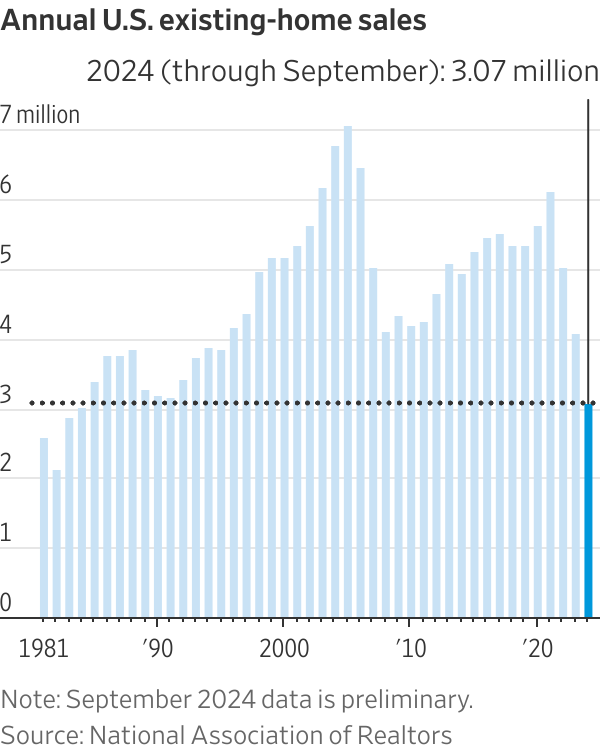
Existing-home sales in September fell 1% from the prior month to a seasonally adjusted annual rate of 3.84 million, NAR said, the lowest monthly rate since October 2010. Economists surveyed by The Wall Street Journal had estimated a monthly decrease of 0.5%.
September sales fell 3.5% from a year earlier.
After a sluggish 2023, economists and real-estate executives widely expected activity to pick up in 2024.
But mortgage rates have stayed higher throughout the year than some had forecast, including in recent weeks after the Federal Reserve’s interest-rate cut last month. That has kept home-buying affordability low .
Home prices have continued to rise, as inventory in many parts of the country is still below normal historical levels. Climbing home insurance costs and a coming election are also adding to buyers’ uncertainty.
“Home sales are stuck at low levels,” said Lawrence Yun , NAR’s chief economist. “Americans are really not moving.” Yun said he forecasts that existing-home sales for 2024 as a whole could match or be slightly below last year’s level.
Expectations that the Fed would cut rates this year caused mortgage rates to drop to 6.08% in September, a two-year low. But the move came too late in the year to lure buyers, real-estate agents say. Many families prefer to purchase in the spring and move houses between school years.
The reprieve in rates also didn’t last long. Mortgage rates have risen for three straight weeks to the highest level since August.
“That trickle up in rates, to right back where we were, just sucked the air out,” said Michael Read, owner of Bridgeway Mortgage & Real Estate Services in Morristown, N.J.
Mortgage rates tend to loosely follow the yield on the 10-year Treasury note, which has been above 4%. But the spread between mortgage rates and the 10-year has widened to above historical norms in recent years, which can push up borrowing costs.
Lenders often sell mortgages to investors. Those investors demand a bigger return, particularly when rate volatility is higher than normal, because mortgages are riskier than ultrasafe government bonds.
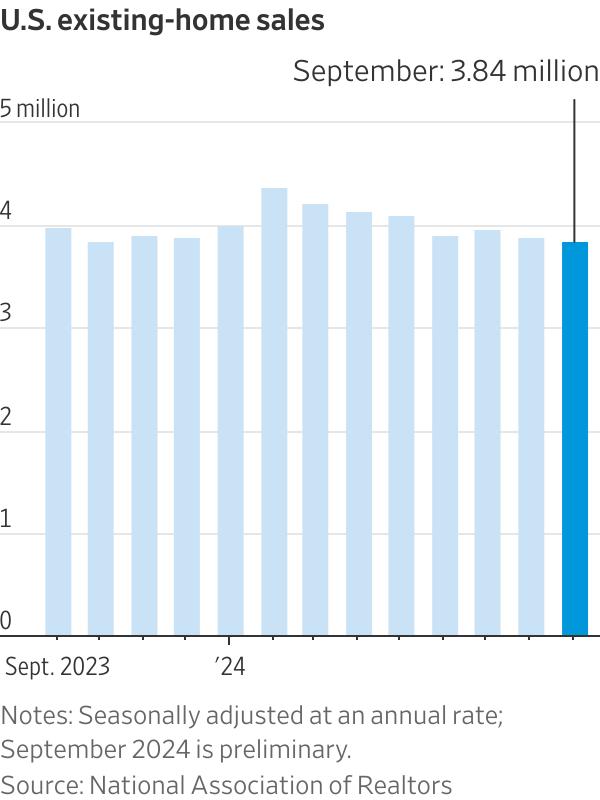
Uncertainty around the presidential election and “murkiness” around recent labor and inflation data haven’t helped, said Mike Fratantoni , chief economist at the Mortgage Bankers Association.
Mortgage applications have fallen for four straight weeks as rates have risen.
“It’s tough in this business,” said Alex Elezaj , chief strategy officer at United Wholesale Mortgage. “Once you think it’s going one way, it goes another.”
A drop in mortgage rates later this year or next would make home purchases more affordable, but that benefit could be offset if home prices continue to rise. In September, 42% of more than 1,000 people surveyed said they expect mortgage rates to fall in the next 12 months, but 39% said they expect home prices to rise over the same period, according to Fannie Mae .
The national median existing-home price in September was $404,500, a 3% increase from a year earlier, NAR said. While that is down from the recent high, it is the highest median home price for any September, Yun said. Prices aren’t adjusted for inflation.
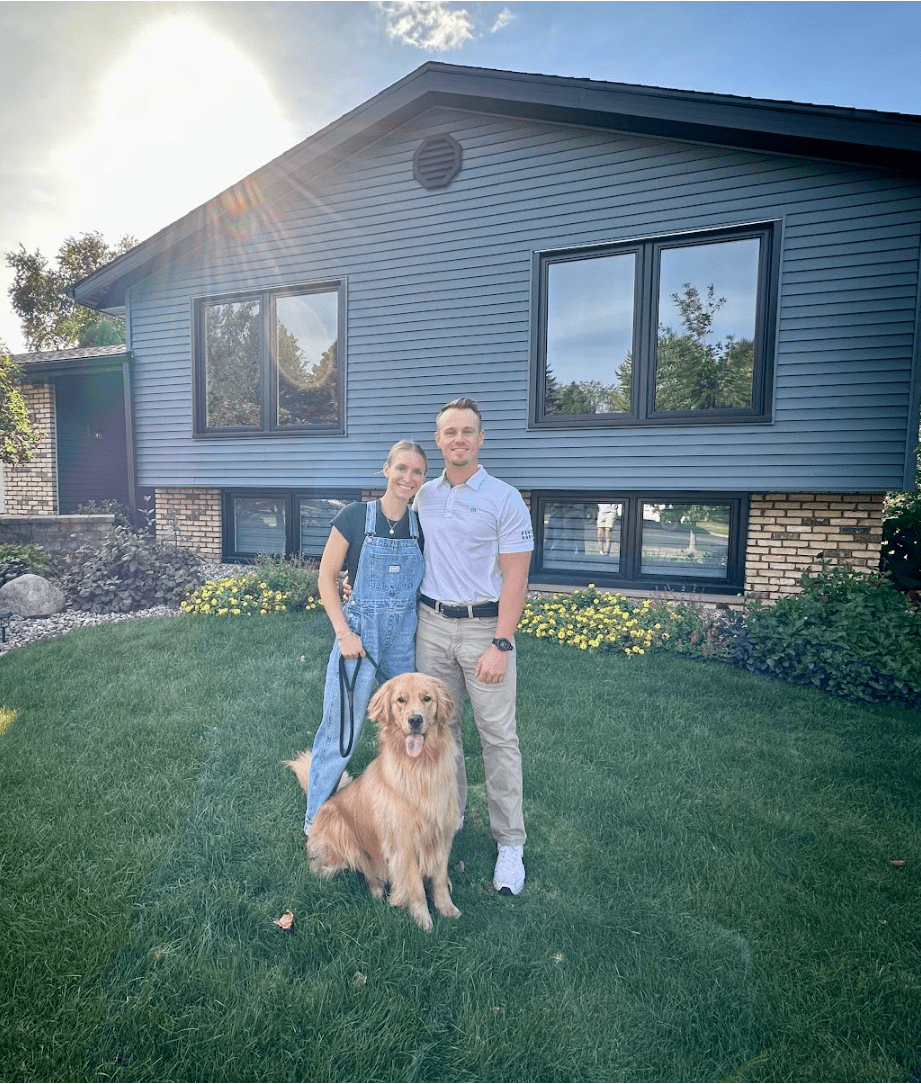
Widespread frustration with the housing market has made affordability an important campaign topic . Both parties have offered proposals to bring down housing costs. Vice President Kamala Harris has rolled out plans for building more housing, for example, and offering help with down payments. Former President Donald Trump has proposed cutting regulations and allowing more building on federal land.
For the buyers who are able to jump into the market now, there is less competition and more room to negotiate. The typical home sold in September was on the market for 28 days, up from 21 days a year earlier, NAR said.
Lucy and Graham Schroeder tried buying a house in the suburbs of Madison, Wis., in 2023 and again this past spring, but they got outbid by other buyers. When they re-entered the market this summer, “it felt like something kind of shifted,” Graham Schroeder said. “Houses were kind of sitting a little bit.”
The couple bought a five-bedroom home in August for $585,000, about 5% below the listing price, and sold their smaller home for $330,000.
The number of homes for sale or under contract rose 23% in September from a year earlier, NAR said, but it remains below normal levels in many markets. Many homeowners who locked in low rates on their current mortgages a few years ago are staying put, because they are reluctant to take on a new loan at a higher rate.
At the current sales pace, there was a 4.3-month supply of homes on the market at the end of September. That is at the low end of what is considered a balanced market between buyers and sellers.
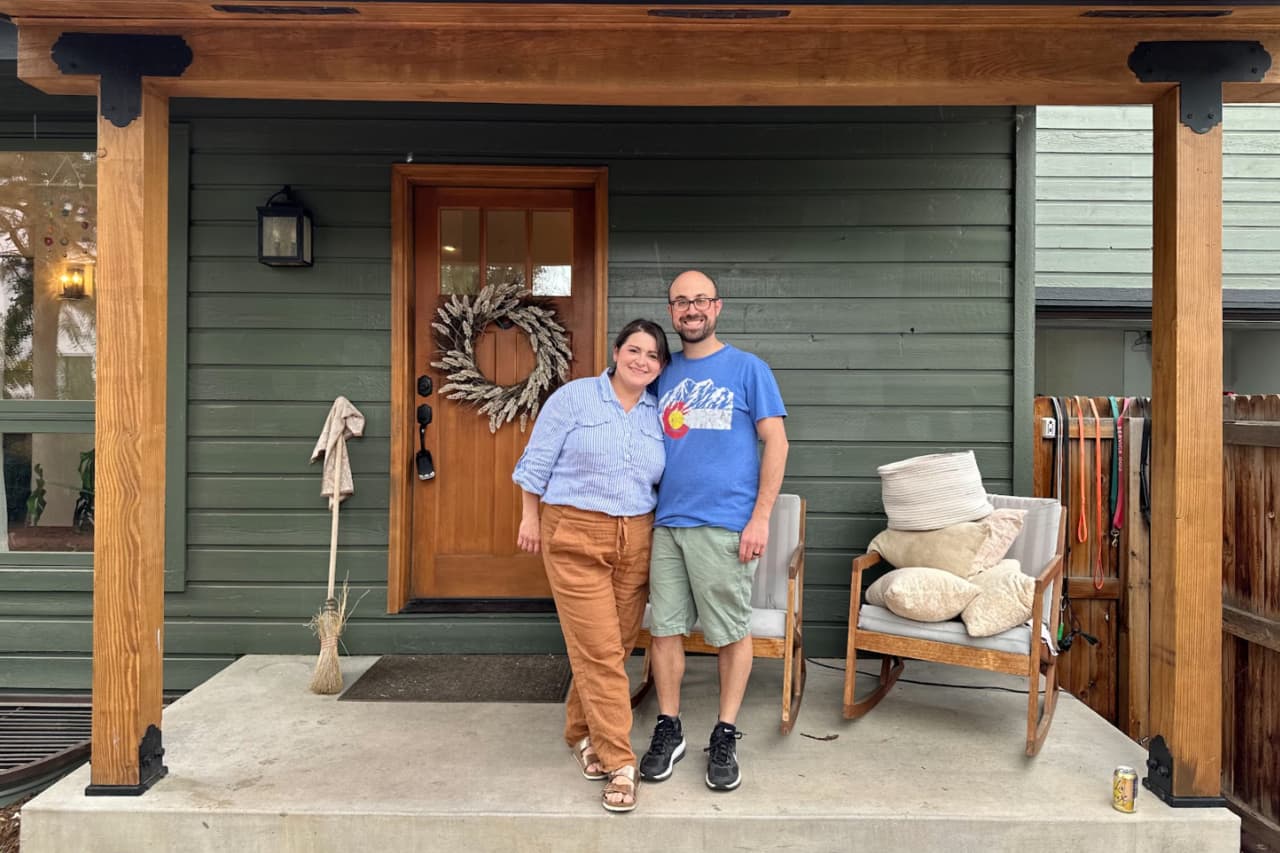
David Schlichter
Kaitlin Skilken and Matt Adler experienced the cool-down in the market firsthand. The couple competed against other buyers to purchase a house this spring in Wheat Ridge, Colo. But when they listed their townhouse in a nearby city for sale in June, it sat for almost two months.
Other units in the community were also sitting on the market, and the homeowner association’s insurance policy didn’t comply with every lender’s requirements, making it more difficult for buyers to get a mortgage, Adler said. “‘You only need one buyer,’ is what I kept saying,” Skilken said.
The couple sold the townhouse in September for the $475,000 asking price, and they paid a $12,000 credit to the buyers for some home repairs and to help lower the buyers’ interest rate.
Home-buying activity typically slows during the holiday season. Some real-estate agents say they expect sidelined buyers to re-enter the market in early 2025.
“It’s not like all of a sudden people have stopped needing to buy houses,” said David Schlichter, a real-estate agent in Denver. “You can only defer for so long.”
News Corp , owner of the Journal, also operates Realtor.com under license from NAR.
 Copyright 2020, Dow Jones & Company, Inc. All Rights Reserved Worldwide. LEARN MORE
Copyright 2020, Dow Jones & Company, Inc. All Rights Reserved Worldwide. LEARN MORE
A divide has opened in the tech job market between those with artificial-intelligence skills and everyone else.
A 30-metre masterpiece unveiled in Monaco brings Lamborghini’s supercar drama to the high seas, powered by 7,600 horsepower and unmistakable Italian design.
Buyer demand, seller confidence and the First Home Guarantee Scheme are setting up a frantic spring, with activity likely to run through Christmas.
The spring property market is shaping up as the most active in recent memory, according to property experts Two Red Shoes.
Mortgage brokers Rebecca Jarrett-Dalton and Brett Sutton point to a potent mix of pent-up buyer demand, robust seller confidence and the First Home Guarantee Scheme as catalysts for a sustained run.
“We’re seeing an unprecedented level of activity, with high auction numbers already a clear indicator of the market’s trajectory,” said Sutton. “Last week, Sydney saw its second-highest number of auctions for the year. This kind of volume, even before the new First Home Guarantee Scheme (FHGS) changes take effect, signals a powerful market run.”
Rebecca Jarrett-Dalton added a note of caution. “While inquiries are at an all-time high, the big question is whether we will have enough stock to meet this demand. The market is incredibly hot, and this could lead to a highly competitive environment for buyers, with many homes selling for hundreds of thousands above their reserve.”
“With listings not keeping pace with buyer demand, buyers are needing to compromise faster and bid harder.”
Two Red Shoes identifies several spring trends. The First Home Guarantee Scheme is expected to unlock a wave of first-time buyers by enabling eligible purchasers to enter with deposits as low as 5 per cent. The firm notes this supports entry and reduces rent leakage, but it is a demand-side fix that risks pushing prices higher around the relevant caps.
Buyer behaviour is shifting toward flexibility. With competition intense, purchasers are prioritising what they can afford over ideal suburb or land size. Two Red Shoes expects the common first-home target price to rise to between $1 and $1.2 million over the next six months.
Affordable corridors are drawing attention. The team highlights Hawkesbury, Claremont Meadows and growth areas such as Austral, with Glenbrook in the Lower Blue Mountains posting standout results. Preliminary Sydney auction clearance rates are holding above 70 per cent despite increased listings, underscoring the depth of demand.
The heat is not without friction. Reports of gazumping have risen, including instances where contract statements were withheld while agents continued to receive offers, reflecting the pressure on buyers in fast-moving campaigns.
Rates are steady, yet some banks are quietly trimming variable and fixed products. Many borrowers are maintaining higher repayments to accelerate principal reduction. “We’re also seeing a strong trend in rent-vesting, where owner-occupiers are investing in a property with the eventual goal of moving into it,” said Jarrett-Dalton.
“This is a smart strategy for safeguarding one’s future in this competitive market, where all signs point to an exceptionally busy and action-packed season.”
Two Red Shoes expects momentum to carry through the holiday period and into the new year, with competition remaining elevated while stock lags demand.
Once a sleepy surf town, Noosa has become Australia’s prestige property hotspot, where multi-million dollar knockdowns, architectural showpieces and record-setting sales are the new normal.
In the remote waters of Indonesia’s Anambas Islands, Bawah Reserve is redefining what it means to blend barefoot luxury with environmental stewardship.









